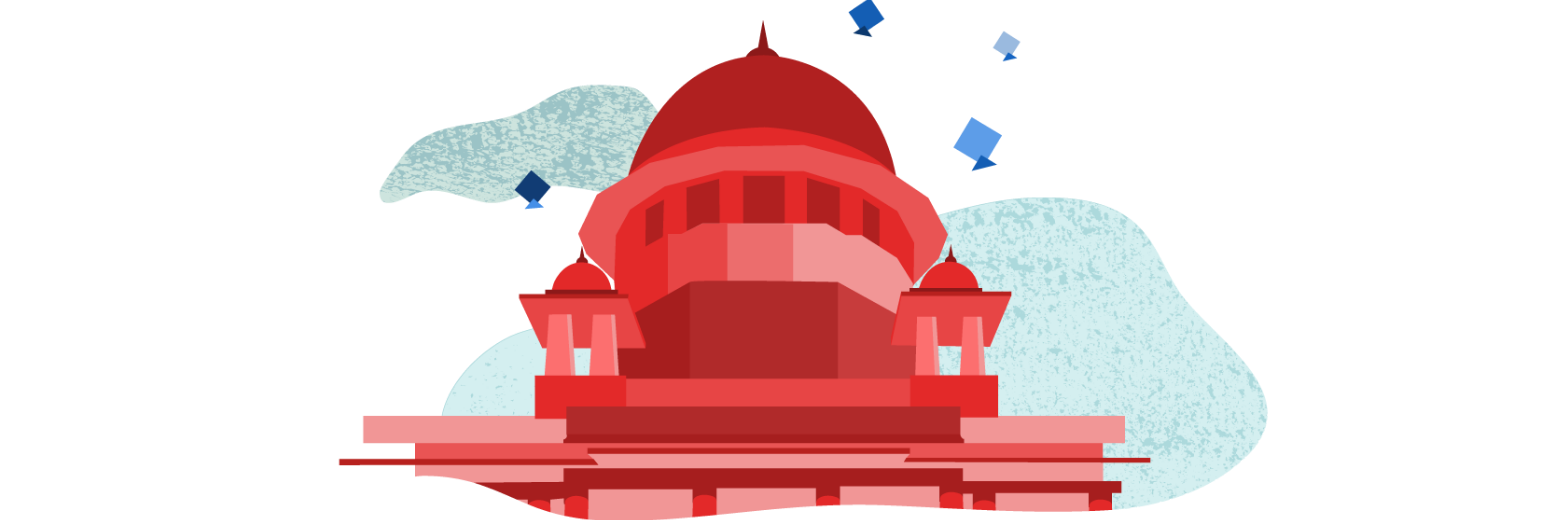
About the Supreme Court of India
As the highest court in India, the Supreme Court’s judgments are binding on all other courts in the country. It serves both as the final court of appeals and final interpreter of the Constitution. Owing to these vast powers, many have labelled it among the most powerful courts in the world. Its authority stems from the Constitution of India, 1950.
Introduction to the Supreme Court
Role: Highest appellate and constitutional court in India
Composition: 34 judges, including the Chief Justice
Location: New Delhi
Year Established: 1950
What types of cases does the Supreme Court hear?
The Supreme Court has jurisdiction (the authority to hear) over a wide range of cases. Its jurisdiction is generally classified into original, appellate and advisory.
Under its original jurisdiction, the Court enforces fundamental rights, hears federal disputes and can transfer cases. As a guardian of fundamental rights, the Court serves to protect citizens from the excesses of the legislature and executive. With regards to federal disputes, the Court has the exclusive authority to settle disputes between the Union and a state, or between two states. Finally, its original jurisdiction also empowers it to transfer cases – for example from one High Court to another.
While cases that fall under the Court’s original jurisdiction generally garner the most public attention, cases that fall under its appellate and extraordinary appellate jurisdictions make up a vast majority of its docket. Its appellate authority allows it to hear constitutional, civil and criminal appeals against High Court judgments. Subject to a few exceptions, litigants seeking to appeal a High Court judgment, must first seek ‘leave’ from the High Court. Meaning, the High Court has to certify that the appeal entails a question that needs to be settled by the Supreme Court.
Litigants can circumvent this requirement for a certification by requesting the Supreme Court for ‘special leave’. Under the Supreme Court’s extraordinary appellate jurisdiction, it has wide discretionary power to grant special leave to appeals against any order by any lower court or tribunal. Such cases are called Special Leave Petition (SLPs) and constitute around 80% of the Court’s docket (see T. Khaitan’s research).
Finally, the Court also has an advisory jurisdiction. The President of India has the power to refer questions of public importance or disputes arising out of pre-constitutional arrangements to the Supreme Court. Since the Court’s establishment, there have been fewer than 50 cases arising out of a Presidential reference (according to SCC Online). To put this in perspective, the number of cases pending before the Court at the beginning of 2020 was nearly 60,000.
This overview of the Supreme Court’s jurisdiction is not exhaustive. A more detailed breakdown can be found here.
How does the Supreme Court hear cases?
The Supreme Court resolves disputes by considering the arguments advanced by parties on both sides and then delivering a judgment. First, parties submit their written arguments through their advocates. These, for example, may take the form of Writ Petitions or Civil Appeals. If the Court chooses to hear the case, then advocates from both sides present oral arguments in public hearings. After oral arguments conclude, the Court usually does not immediately produce a judgment, rather it ‘reserves’ the case for judgment at a later date.
A judgment comprises an order paired with reasoning. In the order, judges issue directions and/or reliefs to the parties. Further, judges explain why they issued the order by providing written reasons. This exercise of reason-giving adds crucial legitimacy to judgments. Importantly, it serves to prevent judges from arbitrarily issuing orders.
Sometimes cases may have multiple judgments, if the judges hearing it disagree with each other. In such instances, the decision of the majority is binding. For example, in the Sabarimala Temple Entry dispute, only one of the four judges upheld the temple’s custom of excluding women as legal. Therefore, the binding decision came from the other four judges – namely that the custom was unconstitutional.
Most Supreme Court cases are heard by benches comprising two or three judges. The Supreme Court does not hear cases en banc – meaning, not all 34 judges preside over each case. Generally, larger benches are formed if the Court must revisit an earlier judgment. A judgment can only be overruled by a subsequent larger bench (subject to some exceptions). In addition, larger benches are formed (specifically of five or more judges) to hear cases involving substantial questions as to the interpretation of the Constitution. Until now, the most number of judges to sit on a single bench was 13 in the Kesavananda Bharati case.
History
A product of the Constitution of India, the Supreme Court of India came into being on January 26th 1950. This section provides a short overview of the Court’s historical origins under British rule. Further, it looks at some of the key developments in post-independent India.
Predecessor to the Supreme Court: Privy Council
Under British rule, the highest court of appeal was the Privy Council (officially, the Judicial Committee of Privy Council after 1833). At its height, the Privy Council heard appeals from the courts of over 150 colonies and dominions – the equivalent of 1/5th of the human race.
The subcontinent first fell within its jurisdiction in the early 18th century, during the rule of the British East India Company (EIC). The 1726 Royal Charter gave the apex courts (known as Mayor’s Courts) of Calcutta, Bombay and Madras the right to appeal to the Privy Council (then known as King-in-Council).
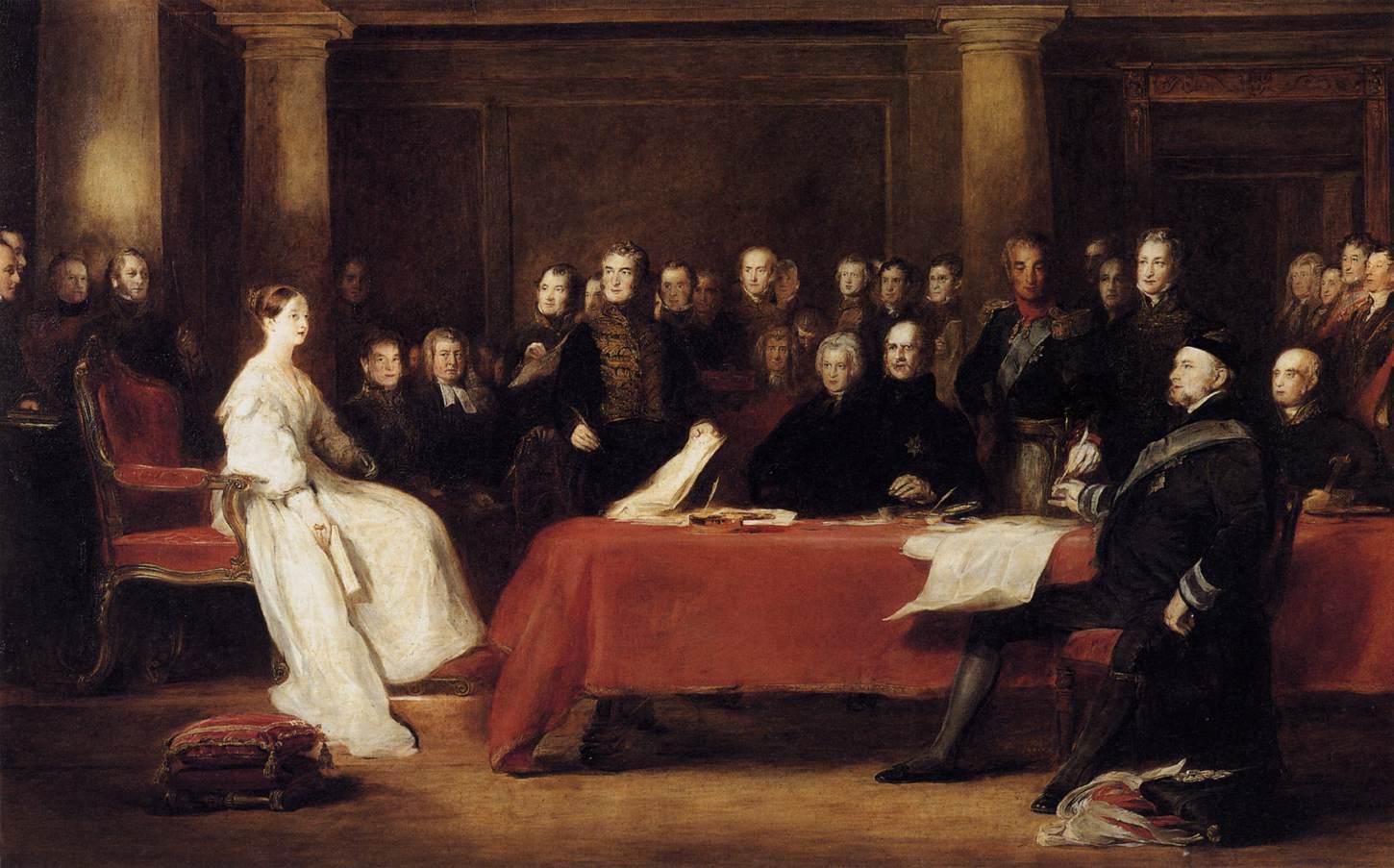
The power transfer from the EIC to the Crown in 1857 brought with it certain reforms. Shortly after the transfer of power, the Crown introduced the Indian High Courts Act of 1861. The Act created High Courts in Allahabad, Lahore, Nagpur and Patna. Further, it replaced the Supreme Courts of Calcutta, Madras and Bombay with High Courts. All judgments of the High Courts could be appealed to the Privy Council.
The Privy Council made a significant contribution to stabilising the Indian legal system, primarily by consolidating precedents under principles of common law. This was perhaps best exemplified when once considers that several members of the Indian Constituent Assembly paid homage to the Privy Council. The Constituent Assembly drafted the Constitution of India. Veteran lawyer-statesman K.M. Munshi observed, “[The Privy Council] has been a great unifying force and for us Indians it became the instrument and embodiment of the rule of law”. Similarly, lawyer Alladi Krishnaswami Ayyar said, “Whatever might be said about the executive government under the regime which has come to an end…there can be no doubt that…the record of the Judicial Committee of the Privy Council has been a splendid one.”
Of course, the Privy Council had its shortcomings. It was often criticised as being inaccessible, both in terms of cost and location (it sat in London). Further, the judges who sat on the Council generally had no familiarity with the specific socio-cultural contexts that disputes from the subcontinent were rooted in. Ultimately this led to calls for a Federal Court of India in the first-half of the 20th century.
Transition: Privy Council to Supreme Court
Due to the inaccessibility of the Privy Council, the independence movement demanded a “Federal Court of India”. Eventually this demand was fulfilled with the enactment of the Government of India Act, 1935 (came into force in 1937). Part IX of the Act established the Federal Court of India, which served as the court of appeal for the various High Courts. Its judgments were binding on all courts in India.
The Government of India Act (GoI Act) also empowered the Federal Legislature to introduce amendments, so as to confer upon the Federal Court supplemental powers (see Section 215). In many ways, this paved the way for the creation of the Supreme Court. In 1948, the Federal Legislature passed the The Federal Court (Enlargement of Jurisdiction) Act I that abolished direct appeals from High Courts to the Privy Council.
Shortly thereafter, on September 24th 1949, India’s connection to the Privy Council came to an end with the passing of the Abolition of Privy Council Jurisdiction Act. With its enactment, even judgments of the Federal Court could no longer be appealed to the Privy Council. When the Privy Council disposed of N.S. Krishnaswami Ayyangar v Perumal Goundman, the last Indian appeal, the two centuries long connection to the Council was finally severed.
Subsequently, the Constitution of India replaced the Federal Court with the Supreme Court of India. The Constitution was ratified on 26 November 1949 and came into force on January 26th 1950. Two days after the Constitution became effective, the Supreme Court was inaugurated on January 28th. Justice H.J. Kania became the first Chief Justice of India.
Post-Independence
Increase in Strength
While the Constitution envisaged a Supreme Court with only eight judges, the rapid increase in the number of cases before the Court necessitated change. Over the years, Parliament has repeatedly introduced amendments to increase the number of sitting Supreme Court judges.
The below table from the Supreme Court’s Annual Report 2018-19 (pg. 47) captures these periodic increases in strength:
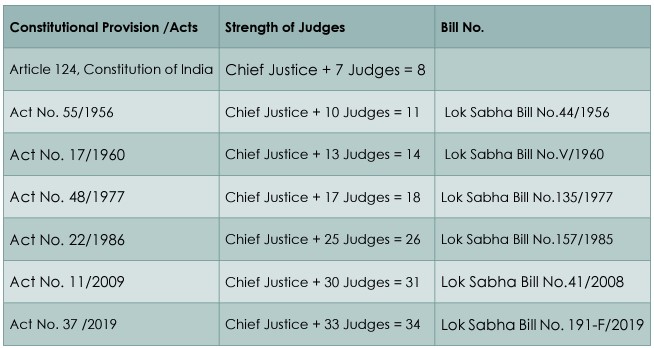
Originally, during the early years, all 8 of the Supreme Court judges sat together to hear cases. However, as the number of pending cases increased exponentially, this became impossible. In a practice which continues till this day, the Court began to sit in small benches comprising only two or three judges to hear cases. The Chief Justice began only constituting larger benches of five or more judges to settle ‘a difference of opinion’ or substantial constitutional questions.
The Emergence of ‘Public Interest Litigation’ in the Supreme Court
Starting in the late 1970s, following Emergency, the Supreme Court of India made a concerted push to make the judiciary more accessible to marginalised communities. It began hearing a new type of case, called the ‘public interest litigation’ (PIL). In doing so, it substantially expanded its role as a constitutional court, allowing itself to proactively hold the other organs of the State accountable to constitutional principles.
In developing its PIL jurisprudence, the Court significantly relaxed the rules of standing in constitutional litigation, to allow ‘public spirited’ individuals and organisations to approach the courts on behalf of the marginalised.
Justice P.N. Bhagwati famously summarised this relaxation in standing in S.P. Gupta (1981): ‘The strict rule of standing which insists that only a person who has suffered a specific legal injury can maintain an action for judicial redress is relaxed and a broad rule is evolved which gives standing to any member of the public who is not a mere busy-body or a meddlesome interloper but who has sufficient interest in the proceeding’ (para. 18).
Over the next two decades, the Court evolved its PIL jurisprudence significantly. While a majority of its early PILs were aimed at enforcing the fundamental rights of marginalised persons, by the 1990s it had expanded the scope of PILs to focus on issues of honest and transparent governance.
Justice Dalveer Bhandari offers a succinct account of the history of PILs in State of Uttaranchal v. Balwant Singh Chaufal (2010). He divides the evolution of PILs into three phases (see paras 45-116):
Phase I ‘…deals with cases of this Court where directions and orders were passed primarily to protect fundamental rights under Article 21 of the marginalised groups and sections of the society who because of extreme poverty, illiteracy and ignorance cannot approach this court…’
Phase II ‘…deals with the cases relating to protection, preservation of ecology, environment, forests, marine life, wildlife, mountains, rivers, historical monuments etc. etc.’
Phase III ‘…deals with the directions issued by Court in maintaining the probity, transparency and integrity in governance’
Today, PILs continue to play a central role in the Court’s functioning. Many of the Court’s most high profile cases that SC Observer tracks are PILs, such as the Sabarimala Temple Entry, Electoral Disqualification and Cow Vigilantism cases.
The Building
From its inauguration on January 28th 1950 until August 4th 1958, the Supreme Court of India operated out of the Parliament building. In fact, its first sitting was in the Rajya Sabha chamber itself. After eight years in Parliament, it shifted to its current building.
The original Supreme Court building was designed by Ganesh Bhikaji Deolalikar, who is known for being the first Indian to head the Central Public Works. The building, which is described as embodying an ‘Indo-British’ architectural style, employs many of the same motifs found in buildings designed by Edward Lutyens (think Rashtrapati Bhawan).
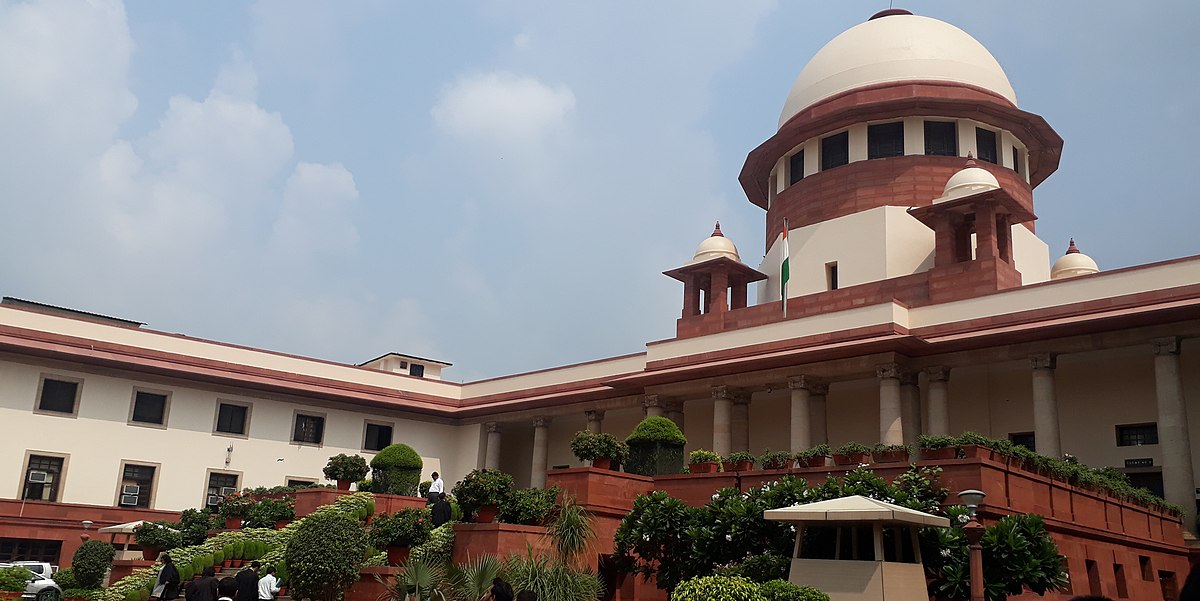
Throughout the years, the Court has undergone several major renovations. The first was in 1979, when two new wings were added – the East and West Wings. Each contained two new court rooms. Then in 1994, the East and West Wings were connected, allowing space for further court rooms, offices and even two libraries – the judges and advocates’ libraries.
This last decade has seen the most significant renovation. First in 2015, the Court added a new extension block near its Museum, allowing more space for offices. Then in 2019, it added an entirely new complex – the Additional Building Complex. While this new complex is separated from the original complex by a major roadway, the two remain connected by several underground passages. Notably, it houses 258 new lawyers’ chambers and series of auditoriums. Its basement has space for 1800 cars to park.
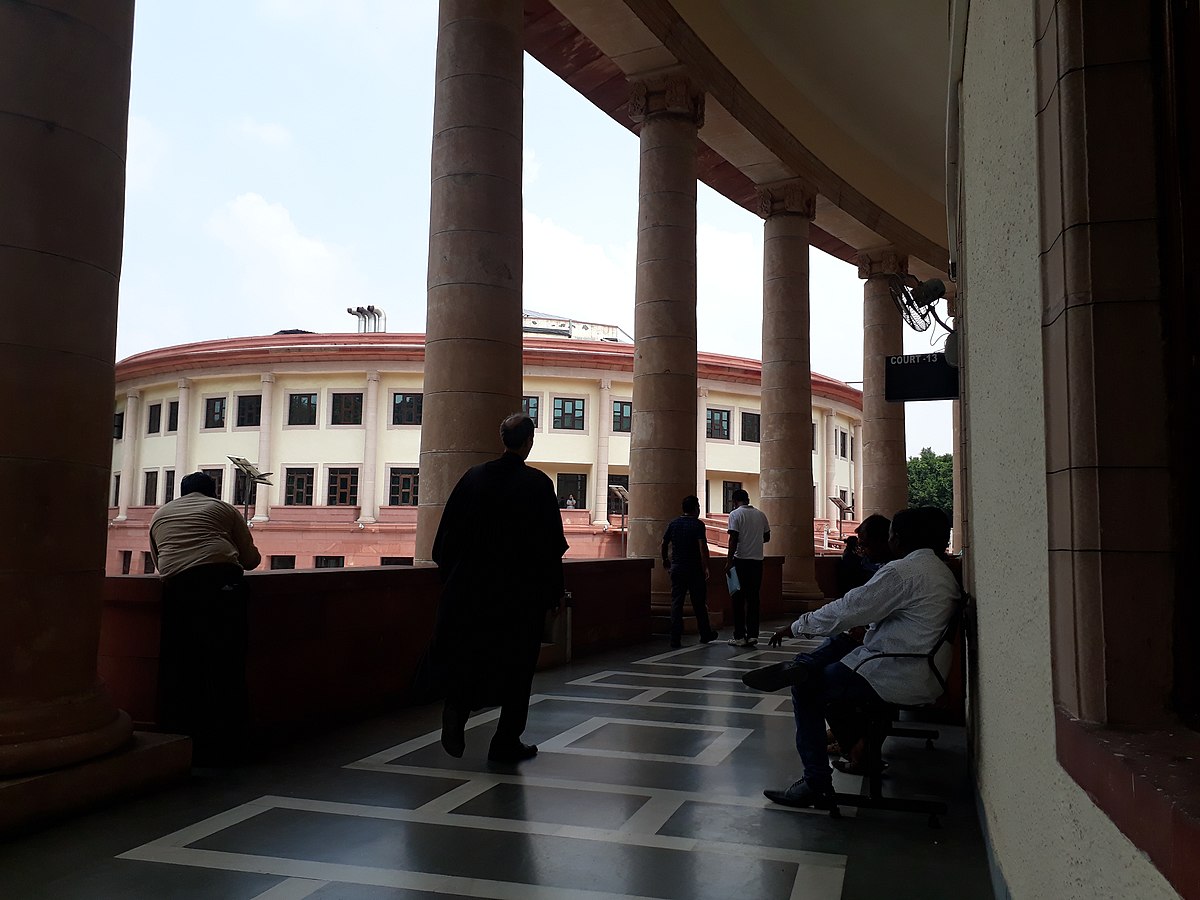
As of now, no major new renovations are expected. Given that the Supreme Court now has a limited capacity to further expand, any future renovations are likely to take the form of modernisations, rather than entirely new buildings.
For more on the architecture of the Supreme Court, see the Annual Report, 2018-19.
Quantitative Overview
Pendency in the Supreme Court of India
One of the largest problems facing the contemporary Supreme Court of India is pendency. Pendency stands for the number of cases pending before the Supreme Court. High pendency can indicate an inefficient court. Although, pendency is also due to factors beyond a court’s control and even an efficient court may be plagued by high pendency.
Since 1950, pendency has continuously increased. In 1951 it was 690 cases and by 2018 it was 57,346.
One major exception to the increase in pendency occurred from 1990 to 1997. In 1990, pendency reached its historic maximum of 109,277 cases. Subsequently it saw a dramatic decline, falling to 19,032 cases. The Supreme Court Registrar had altered the way it counted pending cases. It began counting cases that were clubbed together as a single case. In addition, the court brought ‘in district court judges and other judicial officers to club matters together more effectively’. Since the drop, pendency has once again steadily increased.
The above graph also visualises changes in institution and disposal. The difference in institution and disposal determines pendency. Institution is defined as the number of cases filed and disposal as the number of cases disposed of in a given time period. If on a given year more cases are instituted (filed) than disposed of, pendency will increase – and likewise the opposite holds.
When pendency dropped dramatically from 1990 to 1997, disposal net increased. Further, the difference between institution and disposal for the period does not match the 90,000 case decrease in pendency. This demonstrates how the drop pendency was caused by a change in the way pendency was counted.
Also worthy of our attention is that institution and disposal closely mirror each other. One might not expect this, as institution is dependent on external variables such as population growth, while disposal on internal such as judicial vacancies. However, clearly this cannot be the case, given that our graph demonstrates institution and disposal are strongly correlated. Either disposal is dependent on institution or vice versa. Possible causes for the former could include: (i) a majority of instituted cases are incomplete, i.e. lack necessary documetns, hence are automatically diposed of; (ii) the Registrar has a proportional quota for disposing of cases. A possible cause for the latter could include that perceptions of disposal shape how many persons approach the Court. Further analysis is required to test any of these hypotheses.
